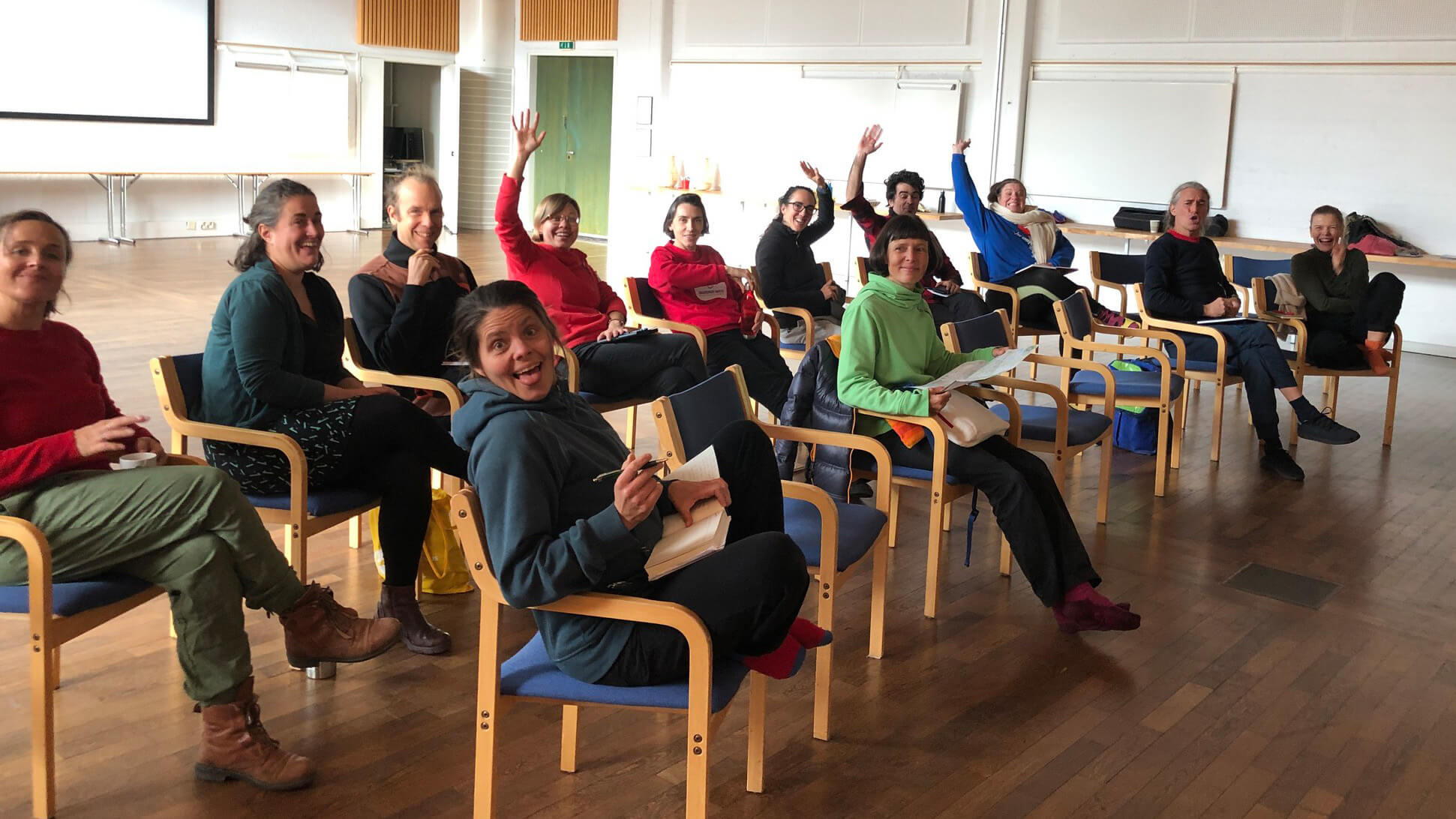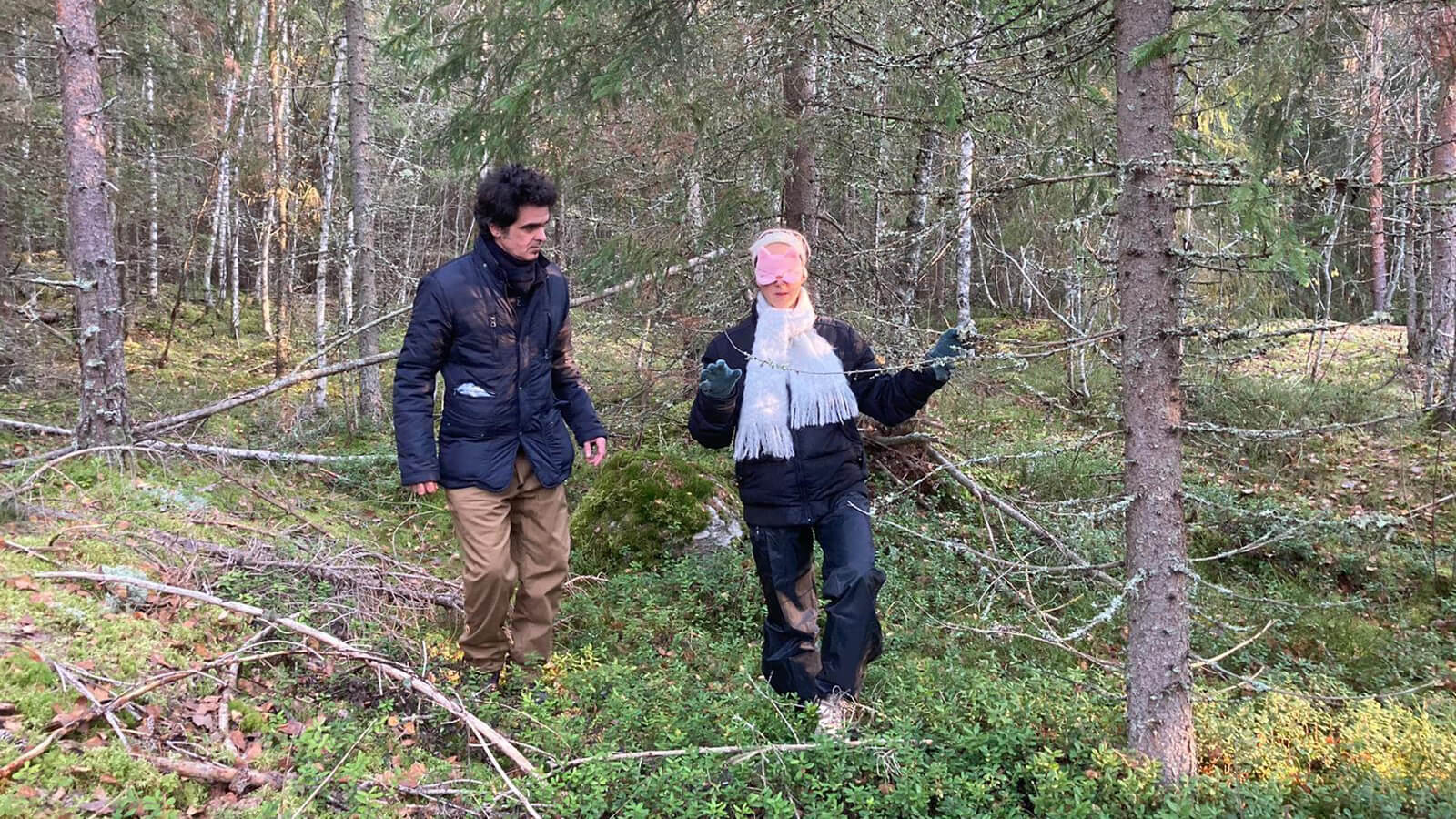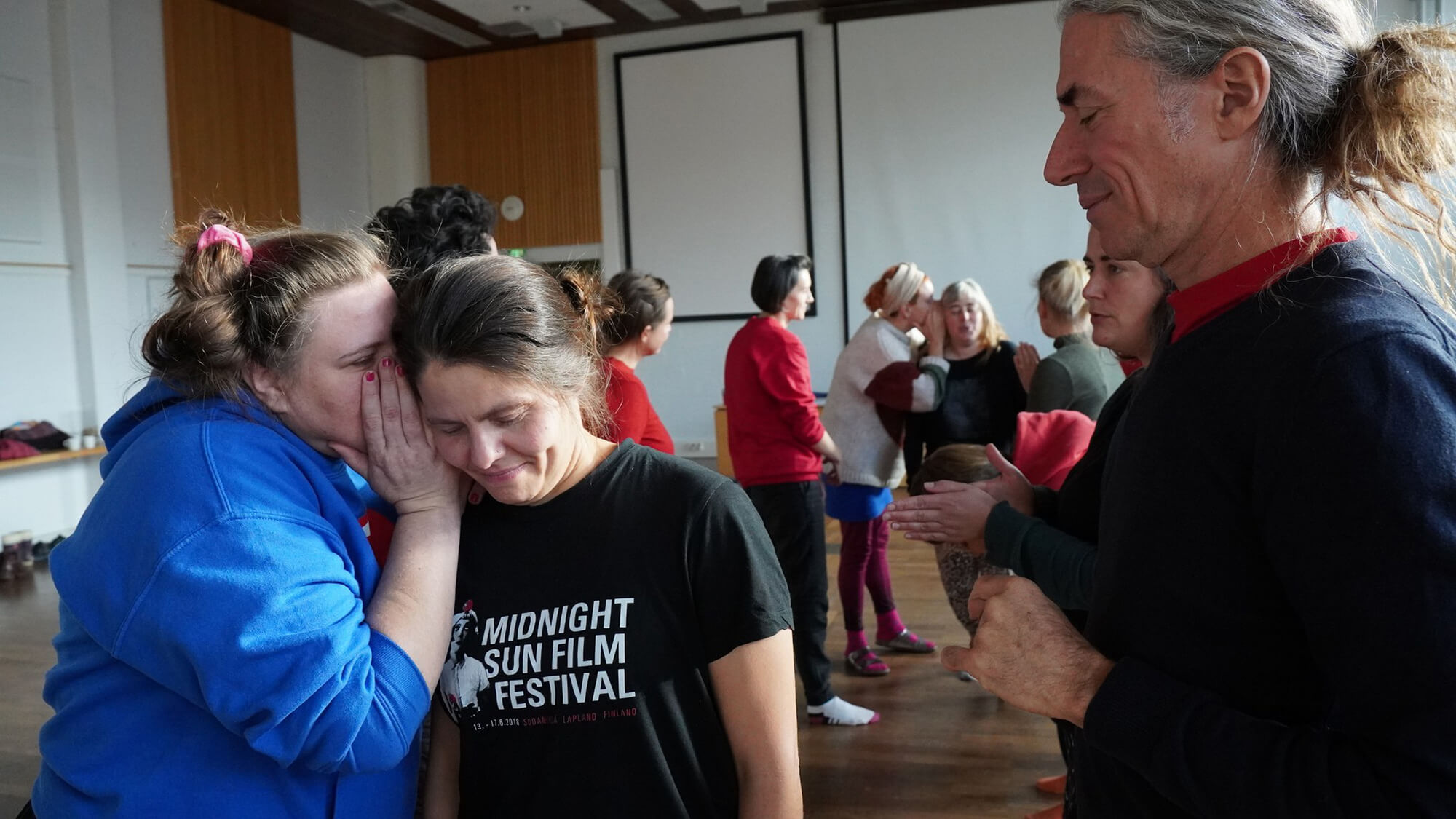Read in Finnish
Red-nosed characters peek out from behind the trees. One climbs a tree and another admires the warmth of the autumn sun on her cheeks. What’s going on? The very first artistic laboratory of ClowNexus with healthcare clowns from several European countries has begun in Nuuksio, Espoo. The goal of the lab was to initiate the development of participatory clowning approaches for children with autism spectrum disorder.
During this week, professionally trained healthcare clowns from six countries gathered for the first time for a workshop. In particular, the week included important information on the autism spectrum, team-building with new colleagues, international exchange of experiences and artistic exploration of the senses.
Being surrounded by the autumnal forest, was an especially great way to tune into the senses! One morning the clowns spent a day on a nature trail, feeling what the forest feels like if you shut out your sense of sight for a while. This was followed by indoor exercises to identify sensory over- and under sensitivities, for example through the sense of hearing.
To dive deeper into the topic of Autism, the clowns got support from experts from the Autism Society Finland, as well as Experts by Experience.
Pia-Maria Topi from the Finnish Autism Society gave a lecture on the general educational topic “Autism – what are we talking about?”. What were some of the most interesting and helpful things for us from Pia’s Lecture?
Pia-Maria Topi put an emphasis on her strong believe that we need autism in our society to provide us different perspectives and ways of dealing with situations. The goal of our work should not be that people with ASD function better in society, or to make them fit to the ways in which “society” functions, but that they are happy. Unfortunately, the latter is something that our society has failed to achieve up until now. Autistic people have statistically even lower levels of wellbeing and happiness that other people with mental disorders.
Pia-Maria’s advice to us was: be loving, be accepting, be appreciative of their way to think, be open, be curious and be adventurous. Each child and person with autism is unique, as we all are. Find our what it is that makes them feel happy and what each child is interested in. Music, dance and other art forms are very important stress relievers for people with autism. If you are open and listen, you will find out how to engage in artistic activites with children with Autism.
We were also very lucky to have two experts by experience Christa Orwell, mother of an autistic son and Orjo Pättiniemi, himself being on the spectrum. They shared with us their thoughts and observations from their own lives.
Christa and Orjo explained to us that ASD often is accompanied by other psychological disorders, which are probably caused by the very high stress levels that people with ASD are constantly confronted with. Therefore, one of the main ways in which healthcare clowns can support children with autism is by finding ways to lower their stress levels. In order to do so, it is important to give a sense of security and predictability to the children before engaging in creative activities. Its also important to gather information on the specific sensitivities from people who know the children well, such as parents or pedagogues beforehand.
Christa and Orjo discussed with us that people with autism enjoy the arts as much as anybody else, but sometimes they might focus on and enjoy different aspects than other audiences, such as finding the costumes or the texture of fabrics the most interesting part of a performance.
And finally their advice was: Breathe and be in the moment when interacting with children with Autism. How lucky, that this is actually already a speciality of the clown character.
It was especially nice when the experts participated in our actual artistic work, commenting and analyzing the exercises together with us. With this, the knowledge went into practice!




What will happen after the laboratory?
The project will now continue with practical artistic research. In each project country this will happen in a slightly different context: in Croatia, for example, the clowns are starting to work with an autism class in a local special school; In Finland, the clowns are working with children and medical staff in a diagnosis department for autism at the New Children’s Hospital in Helsinki.
“The first art lab brought our unique and beautifully diverse group together. I believe and hope that the palpably warm atmosphere, sensitive listening and curiosity to play of our week together will be shared with the group across Europe as the clowns go out into the field to meet children and young people with autism. It’s great to continue this journey, this process together, with the confidence, security, enthusiasm and inspiration we have in each other.” says Kaisa Koulu, Artistic Director of the Clownexus project in Finland.






Recent Comments